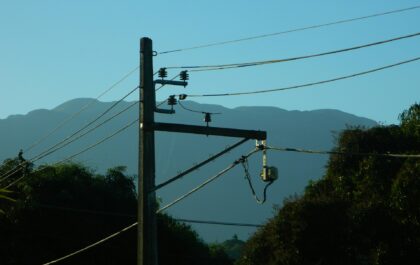Introduction
The oil and gas industry relies on wireline service for continuous well monitoring and intervention to maximize productivity and maintain safe operations. This service uses a compact system of cables to deliver vital tools and sensors deep into wells, enabling data collection, equipment maintenance, and well intervention without additional drilling. Wireline services provide flexibility and accuracy downhole, allowing the operators to transmit real-time data or execute mechanical tasks hundreds or thousands of feet below the Earth’s surface. They are the backbone of decision-making for drilling engineers and production managers, transforming the evaluation, maintenance, and optimization of oil and gas wells. Advancements in digital communication, imaging, and remote operations have expanded the adaptability of wireline solutions.
Understanding Wireline Services
Wireline technology is a system that uses a cable to lower, support, and retrieve downhole tools, enabling multitasking within the wellbore. This technology integrates power and communication lines, allowing for diagnostics, measurements, and interventions in a single trip, improving operational efficiency and minimizing risk. Wireline operations are crucial in the oil and gas industry, from exploration to abandonment, and their precision and adaptability make them indispensable for operators seeking maximum output and minimal environmental impact. Real-time digital telemetry and remote-control capabilities further enhance wellsite safety and productivity.
Types of Wireline Services
The two principal categories of wireline service (slickline and electric line (e-line)) address different complexities and technical requirements in the well.
Slickline Services
Slickline uses a single, durable, non-electrical cable to deploy and retrieve mechanical devices within the well. Favored for its simplicity and reliability, slickline excels at routing and positioning tools such as plugs, valves, and flow-control devices. It’s also invaluable for routine maintenance and fishing operations, where stuck or broken components need to be swiftly retrieved.
Electric Line (E-Line) Services
E-line incorporates conductive wires inside the cable, reducing electrical resistance and transmitting signals. It allows for the deployment of sophisticated logging and measurement instruments, perforation devices, and other equipment requiring real-time data exchange. The immediate feedback loop of e-line technology means that critical decisions can be made at the wellsite, reducing costly delays and risks.
Applications of Wireline Services
The versatility of wireline jobs makes them vital at multiple phases in well development and management.
Well Logging
Wireline tools gather comprehensive data on rock and fluid properties, which forms the basis for evaluating reservoir quality and distribution. Through high-resolution logging, subsurface uncertainties are minimized, helping operators optimize completion strategies and recovery plans.
Perforation
In cased-hole wells, wireline-guided perforating guns are used to precisely create holes in the casing, establishing a pathway between the wellbore and hydrocarbon-bearing formation. This step is fundamental to initiating and adjusting production as reservoir conditions evolve.
Well Intervention
Wireline interventions are called for when a well experiences blockages, requires new hardware, or needs performance optimization. These interventions maximize uptime, remedy production issues, and contribute to long-term asset management.
Technological Advancements in Wireline Services
Modern wireline systems are leveraging advancements in telemetry, automation, and digital analytics. Advanced telemetry systems transmit high-fidelity data to the surface, enabling real-time well monitoring and control. Autonomous and remotely operated units reduce site hazards and ensure precision. AI and machine learning applications simplify data interpretation, while high-resolution imaging and spectroscopy help operators understand reservoir structure and optimize extraction methods. These innovations support digital field strategies and industry efficiency and safety, with industry leaders like Hart Energy highlighting their impact.
Conclusion
Behind every successful oil and gas operation lies the quiet expertise of wireline teams, whose technology-first approach prevents unnecessary risk, saves costs, and improves well performance. By staying informed about the mechanisms, uses, and technological trajectory of wireline services, industry professionals can ensure their operations remain at the cutting edge of energy production.
Behind the Cable: Ever Wonder How Wireline Services Work? Tap to Explore the Process Step-by-Step
Related posts
More Reads
Behind the Cable: Ever Wonder How Wireline Services Work? Tap to Explore the Process Step-by-Step
Introduction The oil and gas industry relies on wireline service for continuous well monitoring and intervention to maximize productivity and maintain safe…
Trends in Modern Coastal Living: How Homebuyers Are Shaping the Future
Defining Modern Coastal Living The concept of modern coastal living goes far beyond sun, sand, and sea breezes—it’s an increasingly…



